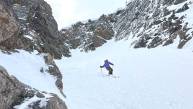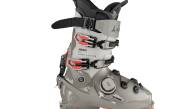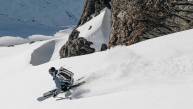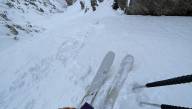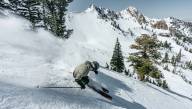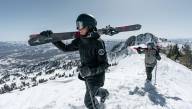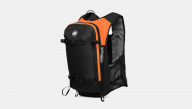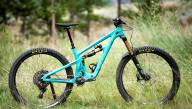tags:
Big Sky, MT, United States |
teton tested |canfield riot |big sky bike test
We had the good fortune to ride a Canfield Riot at TGR's Big Sky Bike Test. The Riot was a very plush brawler with the capable Cane Creek DB handling shock duties. I don't know how Ryan Dunfee did it, but he nailed the CCDB tune on the first try out (he might have started with the base tune on the site and firmed it up a bit), leaving us to just bomb around on that thing the whole week without a tweak.
The feeling, no matter how grin-inducingly beat up the natural singletrack in the Big Sky Bike Park was, was akin to what Dunfee considered a feeling of "Netflix and chill."
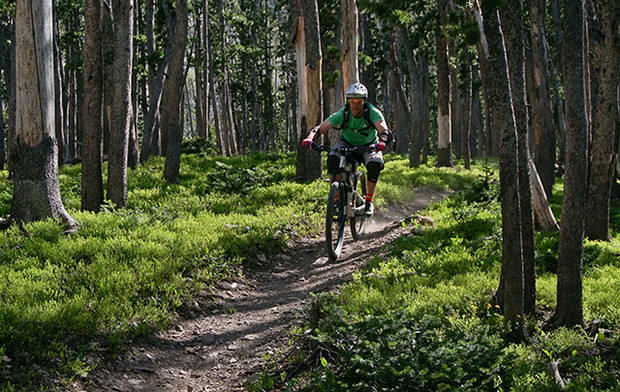 Just bombing around on the Riot. Ryan Dunfee photo.
Just bombing around on the Riot. Ryan Dunfee photo.
The Riot boasted the shortest chainstays of any bike in the test, in any wheel size, at 16.3", allowing us to whip that thing back and forth with no consequences.
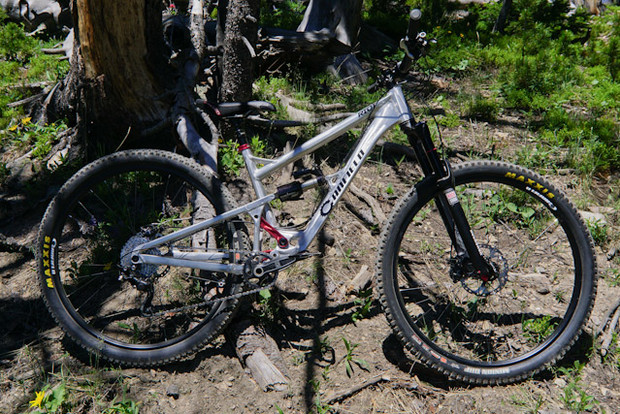 With 140mm up front and 140mm in the back, the Riot's suspension has basically as much travel as you could want before a 29'er starts losing serious playfulness. Ryan Dunfee photo.
With 140mm up front and 140mm in the back, the Riot's suspension has basically as much travel as you could want before a 29'er starts losing serious playfulness. Ryan Dunfee photo.
The Riot has 140mm of travel, which was a bit longer-legged than some of the other niners in our test. That's to be expected given Canfield's pedigree. For what it's worth, the website says you can run it with a 35mm (internal) rim and a 2.8" tire.
Many of our testers commented on how well this thing descended. "Really felt comfortable just letting it go; felt really plush and steady."
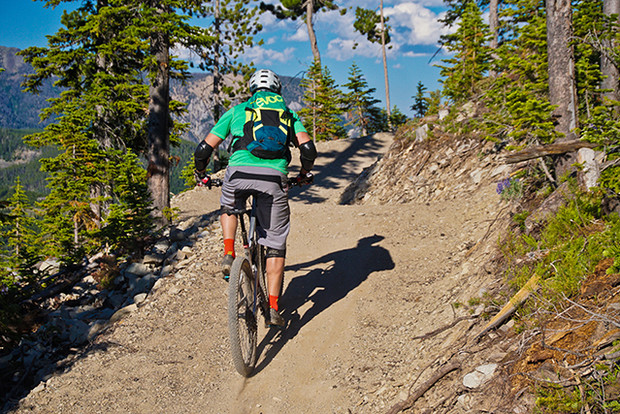 The air is thin and the hill just keeps going UP, damnit! Ryan Dunfee photo.
The air is thin and the hill just keeps going UP, damnit! Ryan Dunfee photo.
I personally thought that it also climbed well. Even though the specs we had on our factory tester included an old school 12-36 tooth cassette, I could still keep up on climbs with the guys running 10-42 or even SRAM's Eagle 10-50 12-speed granny-gear-so-big-you-could-walk-faster cassette.
CBF Suspension Design
Canfield's CBF™ (Canfield Balance Formula) design utilizes the parallel link design (blue piece in the graphic above) that Canfield Brothers has been refining since the late ‘90s, CBF™ “balances” driveline forces by pointing them through the Center of Curvature (which the formula focuses in a very finite space on top of the chainring, while on most suspensions it migrates over an extremely large area) and into the Instant Center throughout the entire range of travel. Usually finding that "Instant Center," and keeping the bike supple while still an efficient pedaling rig, means setting the shock at a specific sag, but CBF is supposed to perform similarly whether you set a deeper sag for a plusher ride (i.e., sit deeper in the travel when you first hop on the bike) or whether you pump up the shock to make it stiffer, lessening the sag. Canfield claims CBF is "the most efficient yet active pedaling platform possible, completely independent of sag, travel and both drivetrain and braking forces."
CBF™ is supposed to minimize chain growth, minimize interruption to the pedal stroke, minimize brake jack, and, ya know, solve all your relationship problems and consolidate your debt.
Now, onto the plain english!
The Riot on the Climbs
 It's a brawler on the downs, but can earn its way up. Ryan Dunfee photo.
It's a brawler on the downs, but can earn its way up. Ryan Dunfee photo.
It's not impossible to figure out that the Riot is not built to climb like a goat. A burly aluminum frame with the monster Cane Creek rear shock screams "let your balls drop!!", but despite the smaller cassette (keep in mind Canfield sells frames only, but will be selling fully build kits soon), the Riot actually spun up climbs surprisingly well.
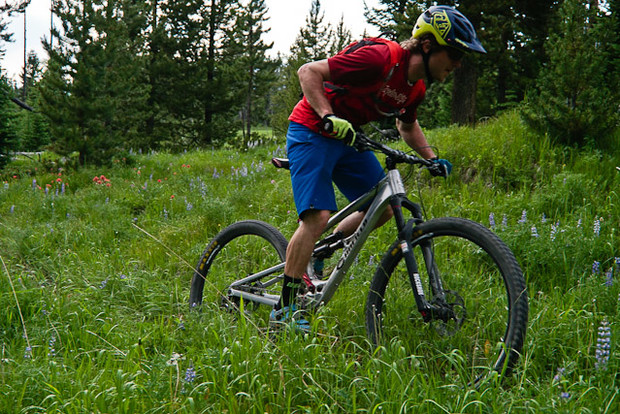 Its intentions (take me downhill!) are clear, but the Riot still climbs to the top of the roller coaster just fine. Ryan Dunfee photo.
Its intentions (take me downhill!) are clear, but the Riot still climbs to the top of the roller coaster just fine. Ryan Dunfee photo.
The suspension felt efficient, there wasn't much pedal bob, and overall, we felt we were making the most of lugging a downhill monster up to the top of the roller coaster. Point being, you will not be suffering, and in fact will be suffering much less so than you imagined after a first glance at the Riot's monster truck aesthetics.
The Riot in Party Mode on the Downhills
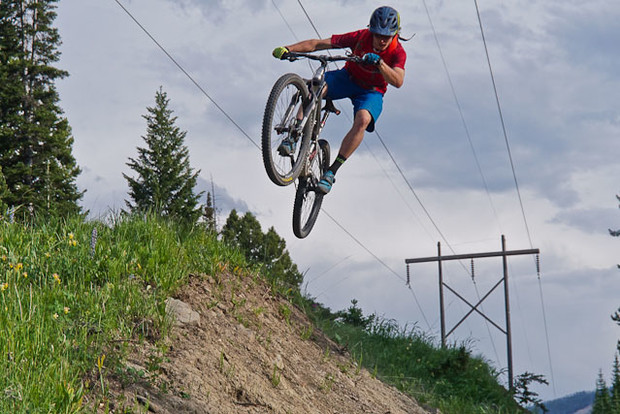 Tester Branham Snyder, finding no issues. Ryan Dunfee photo.
Tester Branham Snyder, finding no issues. Ryan Dunfee photo.
You know any bike brand whose logo is an anodized metal skull is out to build bikes that maul downhills, and the Riot fully delivered on expectations. Despite the Maxxis Ikon rear tire that came on our test bike and in no way matched the bike's descending chops, we were dropping vertical, blown-out chutes in Big Sky with such a degree of comfort we were wondering how many episodes of Stranger Things our significant others had skipped ahead through while we were out of town.
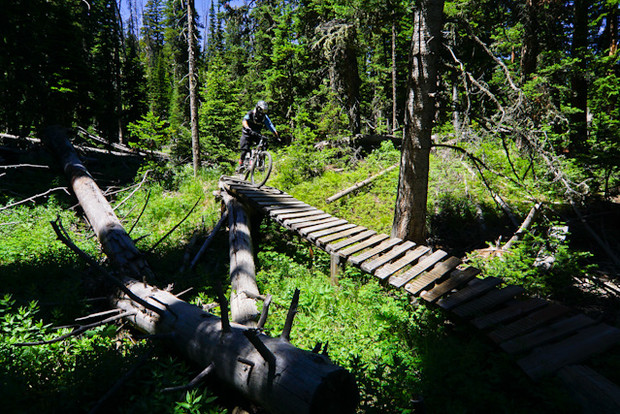 Dunfee found some log skinnies on the Riot in Big Sky, and man if he wasn't freakishly happy. Jon Grinney photo.
Dunfee found some log skinnies on the Riot in Big Sky, and man if he wasn't freakishly happy. Jon Grinney photo.
With a super slack 66.5-degree head angle and 140mm of travel front and back on 29'er wheels, the Riot just soaks up the trail and scratches its dry skin anxiously, impatiently waiting for you to satisfy its addictive hankering to get gnarly.
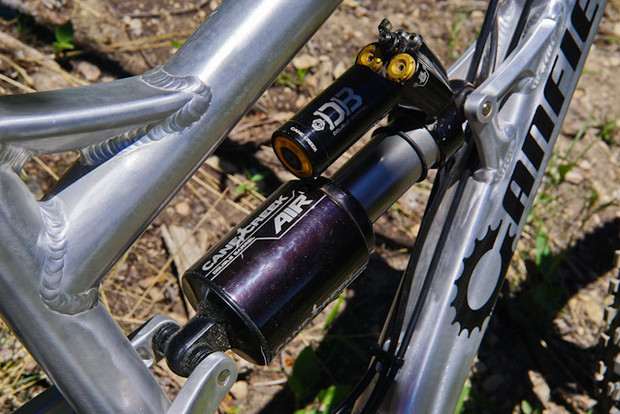 We managed not to eff up the Cane Creek DB's tune, and it felt simply amazing. Ryan Dunfee photo.
We managed not to eff up the Cane Creek DB's tune, and it felt simply amazing. Ryan Dunfee photo.
Miraculously, as Gunnar mentioned earlier, we got the Cane Creek tune pretty much right how we'd want it first try thanks to their online tool, and with that, enjoyed a laughably supple ride on downhill tracks with a smooth, bottomless feel that seemingly couldn't be shaken. While the shorter-travel Evil The Following required a more active, nimble riding style with its shorter travel, the Riot allowed you to hang it all out, get lazy on your line choice, and let go of the brakes, knowing it could plow pretty much over a standing tree if it came to it.
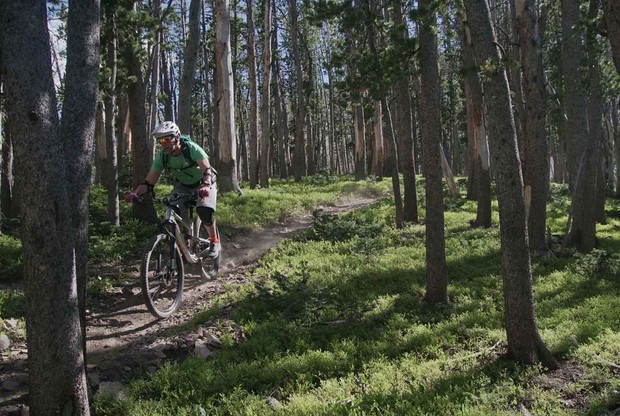 A straightline brawler with extra grip in steeps thanks to the big wheels. Ryan Dunfee photo.
A straightline brawler with extra grip in steeps thanks to the big wheels. Ryan Dunfee photo.
The Riot wasn't the snappiest bike in the test, as the big wheels and tall front end made it much more of a straight-line mauler than a playful descender like the BMC Speedfox or Diamondback Release. But one advantage of having 29" wheels on a bike built for descending is the increased grip in the steeps; having that much more tire contact with the dry Montana dirt meant that that even in tight, vertical, twisty Big Sky chutes with a cross country rear tire, we could calmly maintain traction and control throughout, driving the front wheel hard the whole time.
The Bottom Line
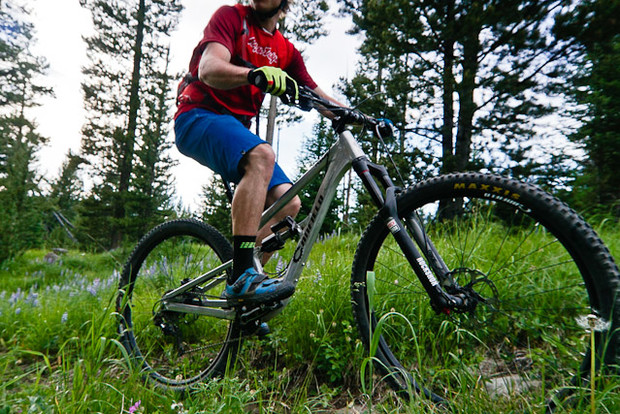 A 29'er with near downhill bike-levels of comfort and a huge margin for error. Ryan Dunfee photo.
A 29'er with near downhill bike-levels of comfort and a huge margin for error. Ryan Dunfee photo.
Canfield's Riot takes mountain biking's biggest wheel size, with its superior abilities to roll over jumbled terrain and maintain grip to the ground, and made a downhill shredder that simply felt unfazed at all times. 140mm of travel hits a nice limit of travel with the big wheels that allows the Riot to monster truck down gnarly downhills while still being nimble and pedalable enough for a trail ride that doesn't require a Korn (yes!) soundtrack.
This comes at the expense of feeling snappy and light side to side, with a tall feel to the bike that makes it less liable to fall over sideways in corners at the flick of a wrist. There really was not one bike we tested in Big Sky that sucked, so I'd encourage you readers/potential buyers to pay the most attention to what kind of feel you like when you ride a bike and see which of our testers matches that feel, versus specs or geometry numbers.
 Smooth, plush, supple. Time to Netflix and chill. Ryan Dunfee photo.
Smooth, plush, supple. Time to Netflix and chill. Ryan Dunfee photo.
Still, the Riot is incredibly smooth, plush, and supple while retaining a ton of traction and being friendly to climb, and if that's the combination you like, then by all means, call up Canfield, one of Bellingham's 537 boutique bike companies making rad shit, and order one up.
At $2,099 for the frame with a Cane Creek Double Barrel shock, the Riot is anywhere from $500-1000 cheaper than its competitors, but granted, it's alloy and not carbon. And while we were perfectly, 100% happy with the Cane Creek, if you really want to turn it up to 11, you can doll out another $900 and have a Push ElevenSix coil shock affixed to your heavy metal mauler.




